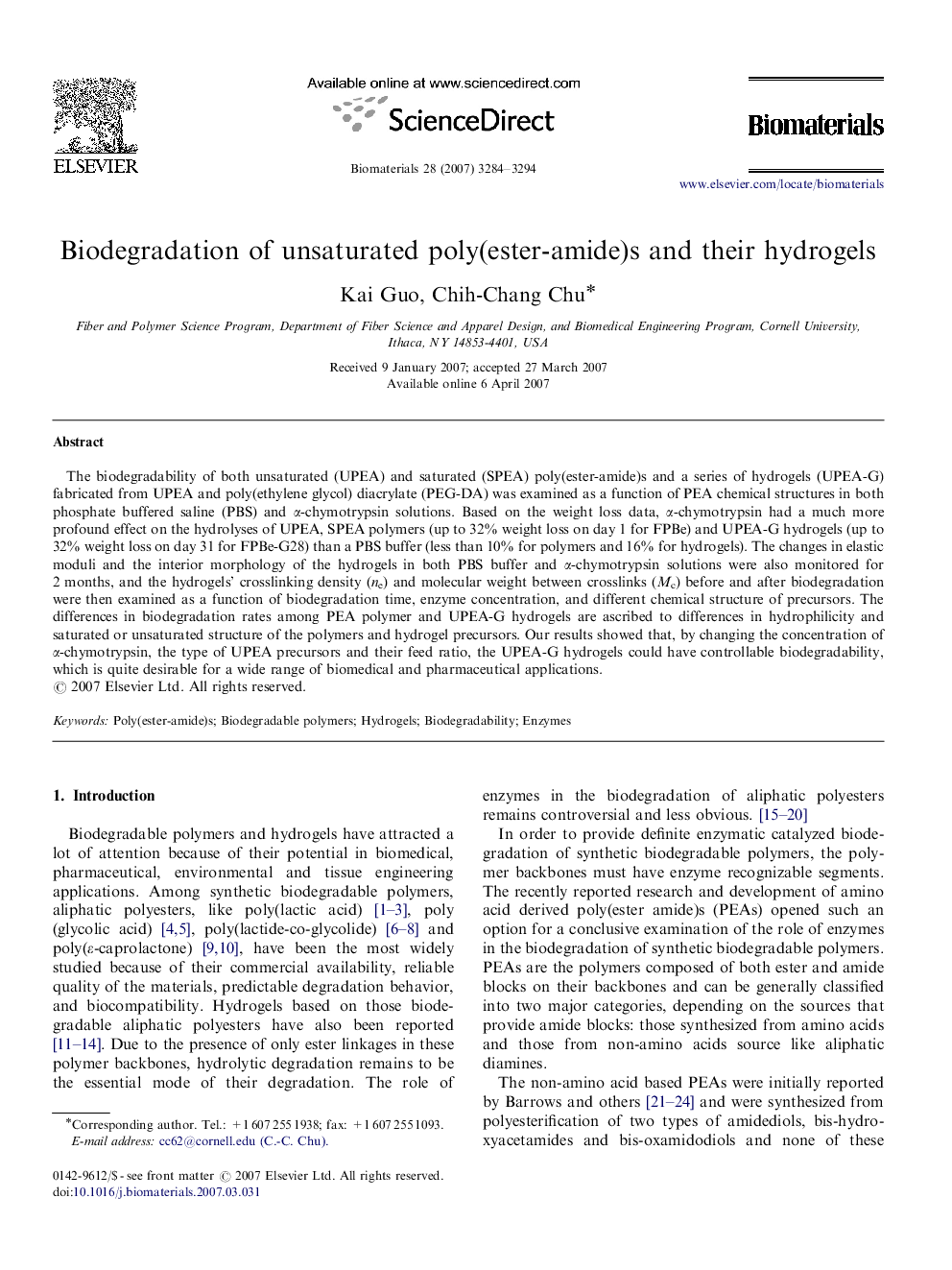| کد مقاله | کد نشریه | سال انتشار | مقاله انگلیسی | نسخه تمام متن |
|---|---|---|---|---|
| 11419 | 739 | 2007 | 11 صفحه PDF | دانلود رایگان |

The biodegradability of both unsaturated (UPEA) and saturated (SPEA) poly(ester-amide)s and a series of hydrogels (UPEA-G) fabricated from UPEA and poly(ethylene glycol) diacrylate (PEG-DA) was examined as a function of PEA chemical structures in both phosphate buffered saline (PBS) and α-chymotrypsin solutions. Based on the weight loss data, α-chymotrypsin had a much more profound effect on the hydrolyses of UPEA, SPEA polymers (up to 32% weight loss on day 1 for FPBe) and UPEA-G hydrogels (up to 32% weight loss on day 31 for FPBe-G28) than a PBS buffer (less than 10% for polymers and 16% for hydrogels). The changes in elastic moduli and the interior morphology of the hydrogels in both PBS buffer and α-chymotrypsin solutions were also monitored for 2 months, and the hydrogels’ crosslinking density (ne) and molecular weight between crosslinks (Mc) before and after biodegradation were then examined as a function of biodegradation time, enzyme concentration, and different chemical structure of precursors. The differences in biodegradation rates among PEA polymer and UPEA-G hydrogels are ascribed to differences in hydrophilicity and saturated or unsaturated structure of the polymers and hydrogel precursors. Our results showed that, by changing the concentration of α-chymotrypsin, the type of UPEA precursors and their feed ratio, the UPEA-G hydrogels could have controllable biodegradability, which is quite desirable for a wide range of biomedical and pharmaceutical applications.
Journal: Biomaterials - Volume 28, Issue 22, August 2007, Pages 3284–3294